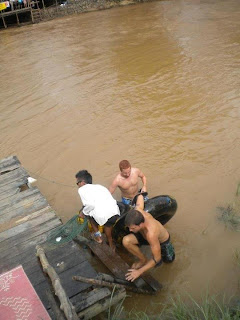Many people pull out on a round the world trip because they think they don't have the necessary "dinero". Unless you are homeless or are planning to stay at 5-star resorts and eat at michelin recommended restaurants, you can do it. In fact, there are countries in Asia, for example, where you can live with US$20 a day (accommodation plus food), or even less. Of course, in that case you would have to eat street food and sleep at hostels, but that doesn't mean it won't be fun. Quite the opposite.
My average cost per day was US$150, all in (transportation, accommodation, food and entertainment). I would consider myself a mid-range spender (not a hippie, nor a fancy traveller). My strategy was to minimize spendings on human basic needs (food and sleep), so I could engage myself in unique, and very often expensive, experiences. This aggressive approach to travelling plus the fact that I stayed 3 to 4 days on average at each city (incurring in high transportation costs), explains why my daily spending may look substantial.
Below, a few considerations on the nature of my cash outflows, which may help you establish a budget for your own round the world trip:
Transport: two months prior to departure, I bought a US$5,000 Star Alliance Round the World Ticket, which, in my case, included twelve flights (São Paulo - New York - Honolulu - Auckland - Sydney - Bangkok - Tokyo - Beijing - New Dehli - Istanbul - Amman - Cairo - Frankfurt - São Paulo). I used those cities as hubs to explore nearby countries, which I could reach by land, air or sea. For Asia, the preferred mean of transport was the plane, as everything is too far and land transportation can get you killed (unfinished roads, reckless drivers). I preffered trains to move around Europe, as it gave me lots of flexibility (tickets can be bought at the station on the day of departure) and I could sleep while I travelled (in the case of night trains, which I used for long-distance travels). I opted for maritime transportation to go from Spain to Morocco, which is about 20 km far (Algeciras - Tangier) and from Estonia to Finland, as it was cheaper than flying.
Food: you can have a decent meal at a restaurant for US$5-10 in most of Asia (ex. Laos, Cambodia, Myanmar, Thailand, Indonesia, Vietnam, India, Nepal and China) and Eastern Europe (ex. Poland, Romania, Estonia, Latvia and Lithuania). You will struggle to find nourishment for US$15-20 in Japan, New Zealand, Australia, Singapore, Russia and Nordic Countries. As a whole, I would place the rest of Western Europe and the Middle-East in the middle of the range.
Sleep: again, you can shut your eyes cheaper in most of Asia and Eastern Europe, paying around US$7-15 for a hostel. You won't find shelter for much less than US$25-35 in Western Europe, Japan, Australia, New Zealand, Singapore and Russia. In some very poor countries or where hostels are limited or inexistent (ex. Lebanon, Dubai, Egypt and India), you will have to pay a bit more for a hotel (except for India, where you can find a five-stars hotel for US$30 per person).
Entertainment & culture: as I said, I took this type of spending very seriously, facing each day as a once in a life time opportunity. Examples of this type of expenses were: bungy jump in New Zealand, US$260; a concert at Sydney's Opera House, US$150; New York Knicks game at the Madison Square Garden, US$130; bobsleigh in Latvia, US$100; shooting with an AK-47 in Vietnam, US$1 per bullet; not to mention the several excursions to deserts, temples, islands, war sites and visits to museums. Finally, nightclubs "sightseeing" was also an important part of my activities (and spendings), as it provided a profound understanding of the cultural characteristics, as well as anatomical, of the inhabitants of each visited location.
As you can conclude from the aforementioned data, you can plan your round the world trip and adjust the level of daily spending by choosing countries that are in line with your targeted budget. I met all kinds of travellers during my trip, from daddy-financed playboys who would only stay at hotels from hippie-like backpackers that would ask for rides on the road and couch-surf (sleep at a volunteer's house for free, check
https://www.couchsurfing.org/). Both seemed happy. Therefore, I believe money is no excuse for not fulfilling your dream of discovering the world. It's just a matter of planning and understanding your needs.

Picture: You will have less dollars in your account after
a round the world trip, but it will definitely be worth it




























